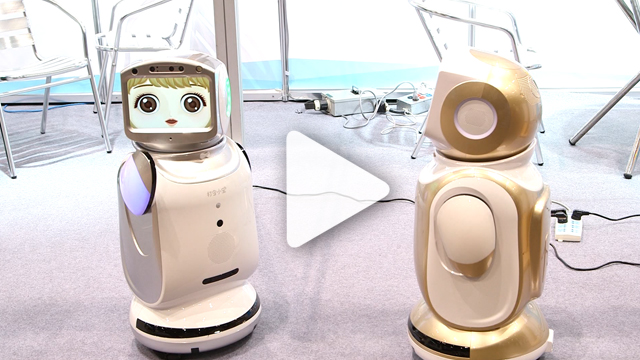MHI Blog—Just a scant three years after the debut of the original U.S. Roadmap for Material Handling & Logistics, version 2 of the report and action plan was released at ProMat 2017. As an update of the preceding document, U.S. Roadmap for Material Handling & Logistics 2.0 (Roadmap 2.0) is intended to help the supply chain industry determine how it needs to change between now and 2030.
|
Global Trade Mag—Bans and restrictions can grow into serious trade barriers unless businesses keep track of them and efficiently integrate them into their business processes. This is especially true in global trade, where compliance with complex national and international rules and regulations is a basic prerequisite for long-term success. But the effort required to run checks and obtain the necessary permits must remain manageable, otherwise businesses face an uphill struggle trying to match the lead times and costs needed to thrive in today’s highly competitive global marketplace.
|
Material Handling & Logistics—Little more than 2 1/2 years from now, the global fleet of merchant ships will have to reduce drastically how much sulfur their engines belch into the atmosphere. While that will do good things -- like diminishing the threat of acid rain and helping asthma sufferers -- there’s a $60 billion sting in the tail. That’s how much more seaborne vessels may be forced to spend each year on higher-quality fuel to comply with new emission rules that start in 2020, consultant Wood Mackenzie Ltd. estimates.
|
SupplyChainBrain—International e-commerce, also known as cross-border e-commerce, is growing at a rapid rate, but is faced with a number of challenges such as currency, delivery times, customs and returns. As a result, logistics providers such as FedEx, UPS and Pitney Bowes have acquired niche players to expand international e-commerce capabilities.
|


MHI Blog—According to a new report by MHI and Deloitte, nine technologies are working together to create next-generation supply chains that are digital, on-demand and always-on. These supply chain models have the potential to create tremendous efficiencies and will soon become the new supply chain reality, with eighty percent of survey respondents saying that digital supply chains will be the predominant model within 5 years. Sixteen percent say they already are. The 2017 MHI Annual Industry Report, titled "Next-Generation Supply Chains: Digital, On-Demand and Always-On," covers the potential of these technologies to disrupt and transform supply chains.
|
Material Handling & Logistics—Transportation safety is a top priority, but future safety gains are held back by government red tape that stifles innovation and improvement, according to a new Competitive Enterprise Institute report. "The best way to improve transportation safety is to replace government micromanaging with performance goals, which would hold industries more accountable and encourage new technologies and practices that improve safety," says Marc Scribner, CEI senior fellow and author of the new report.
|
Wall Street Journal—Retailers and logistics companies have been opening warehouses at a record pace to ensure online orders reach customers as quickly as possible. Now they’re struggling to find workers to staff them.
|
MIT Technology Review—There are still just a few companies showing off augmented-reality headsets that do a good job blending digital imagery with the real world, but there is one more joining the fray. Avegant has built a prototype of a headset with a transparent display that it says uses light-field technology to let you view virtual objects as naturally as you do real ones. A light field is the pattern created when rays of light bounce off something, and re-creating this effect is one key to making sharp-looking augmented-reality images that you can comfortably focus on when they are at different depths but in the same scene—like, say, a toy car an arm’s length away and a house off in the distance.
|
ProMat
2017 was certainly a success. There were 900 exhibitors and for the first time, two education theaters featuring the hot topics of autonomous vehicles and
sustainability. With the release of the Material Handling & Logistics U.S.
Roadmap 2.0, the focus was on the future of the supply chain. On the
show floor, attendees got a glimpse of what lies ahead. Aaron Jones, President
of Bastian Solutions, demonstrated the role of an integrator, allowing a company's
data to drive the technology, and there were many demonstrations of cutting
edge technology to be found. Also unveiled was the much anticipated 2017 MHI
Annual Industry Report.
• Watch the video of highlights from ProMat 2017.
• Access a library of videos related to ProMat 2017.

|
EBN—Advances in light-emitting diode (LED) technology continue to bring new opportunities in digital displays. Existing optical technologies are also benefiting from the LED boom, specifically holographic optical elements (HOEs). Holographic optical elements are holographic images embedded onto a thin, clear photopolymer film that can be applied to glass or plastic surfaces. Although the technology has existed for decades, scientists and engineers are turning once futuristic concepts into tangible opportunities for manufacturers and government agencies.
|
Triplepundit—Retail giant Amazon made waves with its recent forays into the entertainment field. And now it looks like the sprawling enterprise is about to pull the rug out from under hydrogen fuel cell skeptics. The company signed a deal with fuel cell innovator Plug Power for a new generation of zero-emission, hydrogen-powered electric forklifts and other equipment at its fulfillment centers.
|
MIT Technology Review—A hack that activated hurricane sirens in Dallas is a harmless warning about a far more serious problem. Urban centersaround the world increasingly drip with technology. But as this hack reminds us, city officials mustn’t forget that cybersecurity isa critical part of adding smarts to the urban environment.
|
MHI Blog—Walmart has recently filed a patent to use drones in-store to fetch product. The patent describes the vision of the drones being used as: "dispatching an airborne drone to an item located within a retail shopping facility, securing that item of inventory to the airborne drone, and then directing the airborne drone to carry the item of inventory to a delivery area located within the retail shopping area."
|


MHI’s new Career Forum enables manufacturing and supply chain professionals to view current job postings of MHI member companies. Go to http://www.mhi.org/careers to find the perfect opportunity for you.
|
Supply Chain Brain—E-retailing is growing and continues to take a larger bite out of total retail sales. For the first half of 2016, it is estimated e-commerce represented 8 percent of total U.S. retail sales. In comparison, for the same period for 2015, it was about 7 percent. Investments in technology are attempting to bridge supply chain components, including the warehouse to the store, website and mobile device in order to create a seamless experience for the consumer. However, it is coming at a price for many retailers.
|
EBN—To sort out what’s going on with autonomous car development among chip vendors, Tier Ones, tech companies and car OEMs, the ideal solution might be a "relationship map" to illustrate who’s in bed with whom on highly automated vehicle platforms. Even if it doesn’t quite rival the messy relationships in a daytime soap opera, autonomous vehicle partnerships are definitely part of a tangled web.
|
Reuters—U.S. wholesale inventories increased as previously estimated in February, but the pace of inventory accumulation appears to have slowed relative to the fourth quarter. The Commerce Department said wholesale inventories rose 0.4 percent after falling 0.2 percent in January. The department reported last month that wholesale inventories increased 0.4 percent in February. The component of wholesale inventories that goes into the calculation of gross domestic product - wholesale stocks excluding autos - also increased 0.4 percent in February.
|


Bookmark MHIsolutionsmag.com to gain quick access to any and all MHI media and news information. MHI Solutions magazine holds all issues of MHI Solutions and Newswire and Industry News eNewsletters, MHI’s Twitter, Facebook and Linkedin social media accounts as well as links to membership information, events, MHI view and the learning center.
It’s easy to find a topic you’re looking for with our drop down menu of categories: Current Features, Industry Trends, Global Trends, Technology, Sustainability, Human Resources, Education, Economic Market Update, and Solutions Spotlight.
Click here to save or bookmark today! For information about advertising, contact Rob Shafer at rshafer@naylor.com.
|
Sustainable Brands—Many unethical, unsafe and unsustainable practices persist, under the radar, three or four layers down the supply chain. It’s a persistent problem that blights the technology sector, as well as many others, despite strong leadership commitments to change. Why, then, is there still a disconnect between what companies want to achieve and the reality, at the base of our supply chains? What’s impeding progress?
|
Transport Topics—As technology makes communication easier and provides real-time data quickly, third-party logistics providers are emphasizing the need to use the information to build stronger relationships with shippers and motor carriers, according to panelists at the 2017 Transportation Intermediaries Association Capital Ideas Conference. Technology can save shippers, carriers and 3PL companies money and time, and also improve the relationship among the three critical cogs in the supply chain, panelists said.
|
SupplyChainBrain—More and more books are coming out covering SCRM and resiliency. All the major consultancies are writing about the concept on a regular basis, new standards are coming out of ISO and ASIS, there’s a new Certificate in SCRM from APICS and a certification in Supply Chain Resiliency, "SC-R," coming out of The Logistics Institute of Canada. The landscape also includes new metrics, such as time-to-recovery, value at risk, risk priority numbering, resiliency indexes, self-assessment maturity models, online Country Risk & Resiliency Indexes and more.
|

|
| |
|
